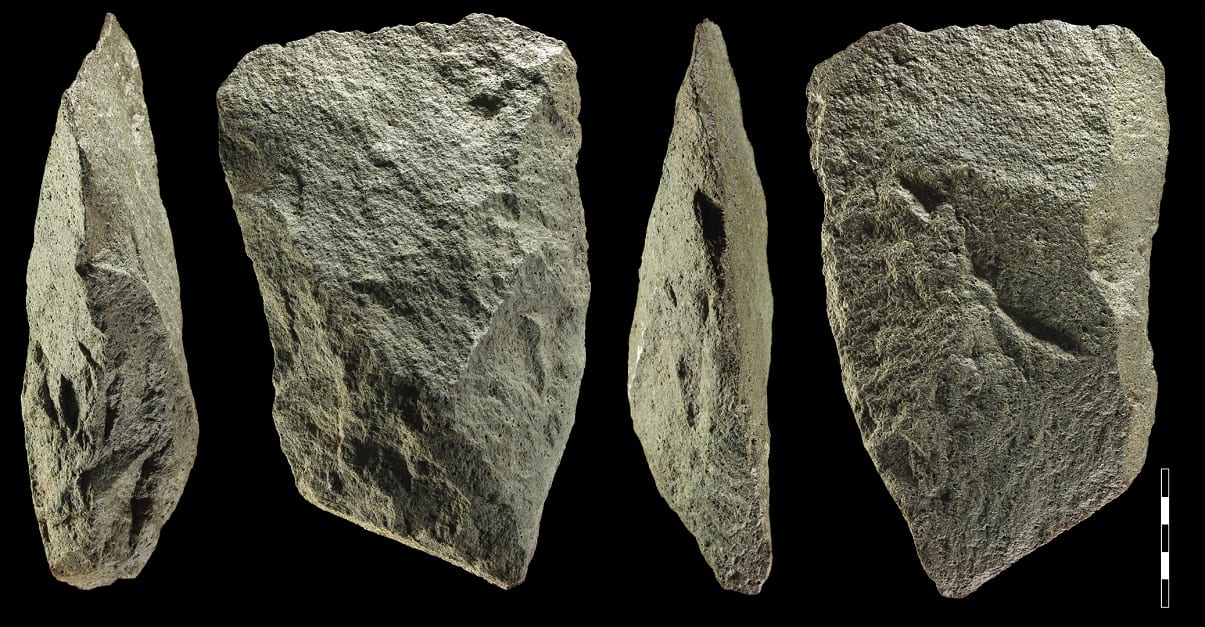Archaeologists have discovered hundreds of stone tools in a goldmine where Homo erectus would have inhabited 700,000 years ago in the eastern part of the Sahara Desert, 70 km east of the modern city of Atbara in Sudan.
Homo erectus (meaning “upright man”) is an extinct species of archaic human from the Pleistocene, with its earliest occurrence about 2 million years ago. Studies of surviving fossils suggest that the species had a humanlike gait and body proportions, and was the first human species to have exhibited a flat face, prominent nose, and possibly sparse body hair coverage.
A gold rush in the eastern Sahara Desert has led to many open-cast mines being excavated in search of the valuable ore. The mining activity has allowed archaeologists to study exposed layers containing large tools with a transverse cutting edge, and almond-shaped cleaver tools with chamfered edges on both sides, which form a pointed tip at the junction.
Archaeologists believe that the site was a workshop for the manufacturing of stone tools, evident by the discovery of associated flakes formed during their production.
Layers of earth and sand lying just above the tools have been analysed using optically stimulated luminescence (OSL), which dates the earthen-sand layer to around 390 thousand years ago.
Professor Mirosław Masojć from the Institute of Archaeology of the University of Wrocław said: “This means that the layers below are certainly older. Based on the style of workmanship of the tools, I believe that they may be over 700,000 years old, and perhaps even a million years old – similar to their counterparts in South Africa”.
The researchers suggest that the site is the oldest known example of tool manufacturing within the areas of Egypt and the Sudan that has a well-confirmed chronology, in which Masojć adds: “Yes, ancient tools are found in deserts, but never before have they come from layers that we can safely determine their age”.
Header Image Credit : Mirosław Masojć – PAP Foundation





